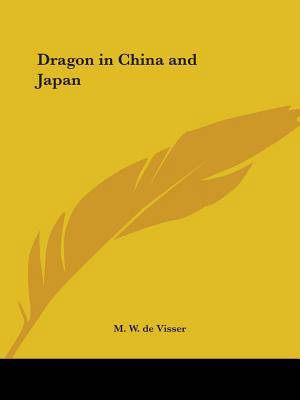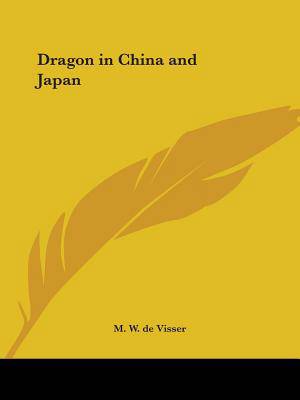
- Afhalen na 1 uur in een winkel met voorraad
- Gratis thuislevering in België vanaf € 30
- Ruim aanbod met 7 miljoen producten
- Afhalen na 1 uur in een winkel met voorraad
- Gratis thuislevering in België vanaf € 30
- Ruim aanbod met 7 miljoen producten
Zoeken
Omschrijving
The Dragon in China and Japan by M.W. de Visser is a comprehensive study of the cultural significance of dragons in Chinese and Japanese mythology. The book explores the origins of the dragon as a symbol of power and good fortune, as well as its evolution over time in both cultures. De Visser examines the various forms of dragons in Chinese and Japanese art, literature, religion, and folklore, and discusses their role in shaping the cultural identity of these nations. The book also delves into the dragon's association with the emperor, as well as its connection to other mythical creatures such as the phoenix and the turtle. With its detailed analysis and rich illustrations, The Dragon in China and Japan is an essential resource for anyone interested in the mythology and folklore of these two ancient civilizations.1913. In the First Book of this volume, the most interesting quotation concerning the dragon in China are systematically arranged, selected from the enormous number of passages on this divine animal found in Chinese literature from the remotest ages down to modern times. In order to give the original conceptions the author did not quote the numerous poems on the dragon, because the latter, although based upon those conceptions, enlarged them in their own poetical way. The Second Book treats of the dragon in Japan, considered in the light of the facts given by the Introduction and Book I.This scarce antiquarian book is a facsimile reprint of the old original and may contain some imperfections such as library marks and notations. Because we believe this work is culturally important, we have made it available as part of our commitment for protecting, preserving, and promoting the world's literature in affordable, high quality, modern editions, that are true to their original work.
Specificaties
Betrokkenen
- Auteur(s):
- Uitgeverij:
Inhoud
- Aantal bladzijden:
- 256
- Taal:
- Engels
Eigenschappen
- Productcode (EAN):
- 9780766158399
- Verschijningsdatum:
- 20/05/2003
- Uitvoering:
- Paperback
- Formaat:
- Trade paperback (VS)
- Afmetingen:
- 210 mm x 281 mm
- Gewicht:
- 598 g

Alleen bij Standaard Boekhandel
+ 78 punten op je klantenkaart van Standaard Boekhandel
Beoordelingen
We publiceren alleen reviews die voldoen aan de voorwaarden voor reviews. Bekijk onze voorwaarden voor reviews.











